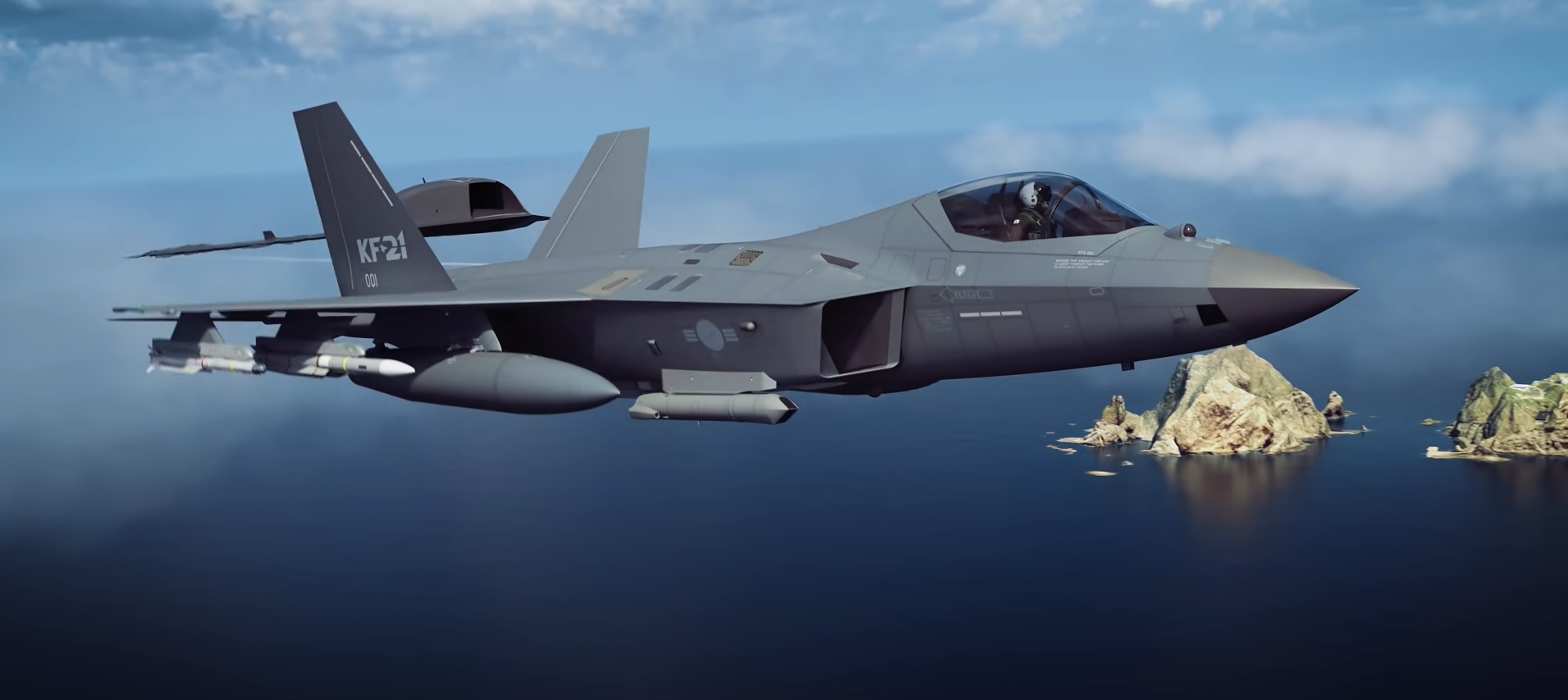South Korea’s defense ministry has announced a series of defense acquisition programs, including the development of indigenous short-range air-to-air missiles (AAM), air-to-ground missiles to be fired from helicopters, and buying new helicopters for the navy.
Seoul has been consistently up-arming amid renewed tensions with North Korea, and the larger western Pacific is becoming a major flashpoint. The Boramae, South Korea’s first indigenously developed fighter, is a 4.5 Generation jet that has progressed rapidly from prototype, taxing, flight trials, and weapons firing stages.
The EurAsian Times previously reported the Korea Aerospace Industries (KAI) concept for loyal wingmen drones to fly with the fighter, unveiled during the International Aerospace Defense Exhibition (ADEX) held in Seoul from October 17 to 22.
Series of Defense Acquisitions
According to KED Global, the country’s Defense Acquisition Program Administration (DAPA) announced a $460 million plan to develop the short-range AAM “with homegrown technology” by 2035. “It announced the plan as the KAI KF-21 is scheduled for mass production next year (2024),” the report added.
“The project will improve our self-defense capabilities through domestic development of cutting-edge weapon systems and will also increase the export competitiveness of guided missiles linked to the KF-21,” DAPA said.
Other projects the DAPA announced include “starting the mass production of air-to-ground missiles for light-armed helicopters at home by 2031.” The LAH, developed by KAI, will be supplied to the Korean Armed Forces from 2024 “to carry out air strike and air assault helicopters.” The LAH is expected to “become the core force of the ground troops.”
The DAPA also wants to replace the navy’s “aging” Lynx helicopters by buying “choppers from foreign aircraft makers.” “Industry watchers see” Lockheed Martin’s MH-60R Seahawk helicopter and the NH90 as “suitable models” for the South Korean Navy.
KF-21 Boramae’s Live Firing
The KF-21 has undertaken live missile firings this year, demonstrating the reliability of its engineering, particularly since the weapons it has released have been Western-origin.
An earlier video from March had shown the Boramae successfully firing an MBDA Meteor beyond visual range (BVR) AAM and its 20-mm Gatling gun from over left air-intake during a test late in March. The missile is dropped from its underbelly launchers, but the video presumably does not capture the part where the solid-fueled ramjet kicks in.
The video, however, subsequently shows four Meteor missiles installed on the uniquely-shaped launching stations – inward curving ‘pits’ that almost swallow the missile, blending its body with the plane’s underbelly airframe. This could be due to the lack of an internal weapons bay like the F-35 or the J-20.
#KF21 Boramae, air-to-air missile separation and machine gun firing test conducted on 2nd protrotype.
KF-21 #Boramae #Indonesia #Korean
🇰🇷🤝🇮🇩 pic.twitter.com/GHQ4lshU7z— International Defence Analysis (@Defence_IDA) March 28, 2023
Aligning the body with the missile meets the same purpose of hiding exposed parts and reducing the number of radar-reflective surfaces. This also reduces frontal aspect stealth.
Then, on April 6, the Boramae fired a German-made IRIS-T short-range AAM. The missile leaves the underwing pylon, situated just beside the wingtip. This was followed by a May 24 “mounting demonstration” of the Meteor and the AIM-2000 short-range AAM.
Besides the missiles being loaded onto the pylons in a hangar before the press, ground staff is also loading the 20-mm rounds into the M61A2 Vulcan rotary cannon. These tests must have been conducted to ascertain whether the plane’s airframe, launchers, and electronics are resilient and functional for weapons release. This could possibly be one of the factors motivating the decision to develop a short-range AAM.
Indigenous Short-Range AAM in RoKAF Inventory
It is not clear if the missile could only be fired from the KF-21 or other fighters in the Republic of Korea (RoK) Air Force, like the F-15K Slam Eagle that Boeing manufactures for the RoKAF.
The Slam Eagles themselves were reported in late 2022 to be put through a massive modernization program. That included a new Active Electronically Scanned Array (AESA) radar, a new mission computer, the latest cockpit displays, and possibly helmet-mounted sights.
Helmet-mounted displays and sight cueing systems are tremendously effective during short-range dogfights for quickly locking on to the target, and it would be inconceivable that the short-range AAM being developed would not be developed to work with such a device.
A new AAM for the Slam Eagles offers the RoKAF tremendous tactical flexibility, as it can allow the F-15s to take on North Korean MiG-29s in the event a war pans out in a way where the two air forces clash. But the compatibility of the new short-range AAM with the F-15s would also depend upon two possibilities.

First is whether Boeing would be willing to help the South Koreans integrate their new missile into an American fighter. Given Seoul being a frontline ally, there should not be any resistance towards the endeavor. In the event there is reluctance owing to techno-commercial concerns, they can be outweighed by diplomatic considerations.
Secondly, whether the RoKAF envisages the F-15 to be used for such a role is another question. Given its size and heaviest payload capacity in Seoul’s inventory, it is more suited for larger air-to-ground strikes against hardened targets, bombing, battlefield interdiction, or missile truck roles.
However, the above assessment of the future of the new AAM remains purely in the realm of speculation and can be determined only after more details are available on the missile’s configuration and technical details.
- The author can be reached at satamp@gmail.com
- Follow EurAsian Times on Google News